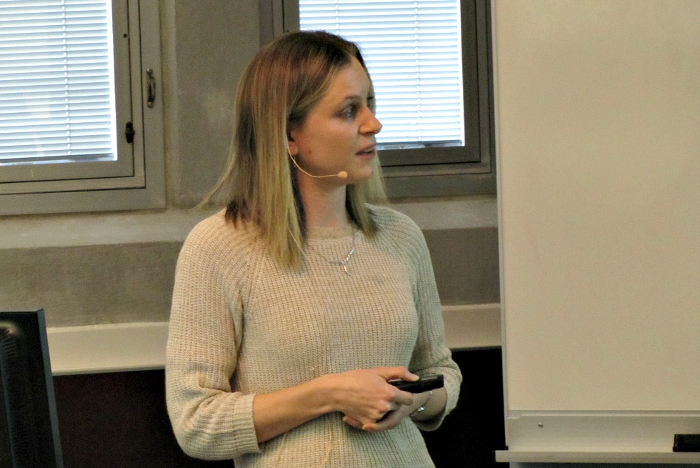NIMBioS Seminar Series
In conjunction with the interdisciplinary activities of the National Institute for Mathematical and Biological Synthesis (NIMBioS), a seminar series on topics in mathematical biology will be hosted at NIMBioS every other Tuesday at 3:30 p.m. (unless otherwise noted) in the Hallam Auditorium, Room 206, Claxton Building, 1122 Volunteer Blvd. Seminar speakers will focus on their research initiatives at the interface of mathematics and many areas of the life sciences. Light refreshments will be served in Room 205 beginning 30 minutes before each talk. Faculty and students from across the UT community are welcome to join us.
Time/Date: Tuesday, January 27, 2015, 3:30 p.m.*
Location:
Room 206, Claxton Building, 1122 Volunteer Blvd.
Speaker:
Dr. Suzanne O'Regan, NIMBioS postdoctoral fellow
Topic:
Detecting critical transitions in infectious disease dynamics
Abstract:
Predicting abrupt shifts in state ("critical transitions") of complex systems is a key research topic in a variety of scientific domains. Small smooth changes in underlying drivers leading to a sudden change in system behavior, mathematically described as a bifurcation, is a mechanism for critical transitions of considerable interest. Bifurcations may be detectable because prior to reaching the dynamical threshold, the system may exhibit "critical slowing down." Statistical signatures of critical slowing down have been detected from temporal and spatial data in biological systems ranging from the global climate system, ecosystems, experimental microcosms and physiological systems. Anticipating infectious disease emergence and documenting progress in disease elimination are important applications for the theory of critical transitions. A key problem is the development of theory relating the dynamical processes of transmission to observable phenomena. In this talk, I consider compartmental epidemiological SIS and SIR models that are slowly forced through a critical transition. I develop expressions for the behavior of several candidate indicators during the approach to emergence or elimination. I show that moving-window estimates of the candidate indicators may be used for anticipating critical transitions in infectious disease systems. Although leading indicators of elimination were highly predictive, I found the approach to emergence to be much more difficult to detect. It is hoped that these results, which show the anticipation of critical transitions in infectious disease systems to be theoretically possible, may be used to guide the construction of online algorithms for processing surveillance data.
*Join us for refreshments at 3 p.m. in Room 205.
Seminar Flyer (pdf)
NIMBioS seminars are available for viewing via live streaming during the talk and are archived for later viewing on NIMBioS' YouTube channel.
For more information about this and other NIMBioS Seminars, visit /seminars.

NIMBioS
1122 Volunteer Blvd., Suite 106
University of Tennessee
Knoxville,
TN 37996-3410
PH: (865) 974-9334
FAX: (865) 974-9461
Contact NIMBioS



